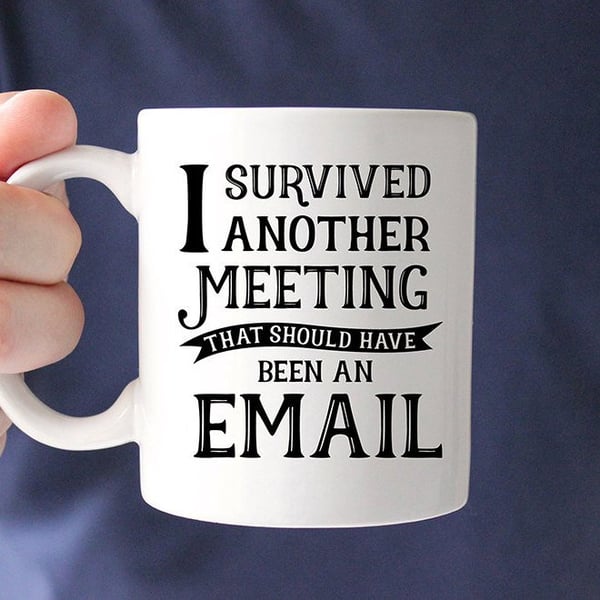
Meetings don't have to suck.
We’ve all heard colleagues complaining about being pulled away from their work in order to sit in on a meeting that likely doesn’t even pertain to them, with no actual content of value being disseminated. These meetings leave them feeling more confused (or even resentful) than they were before their workflow was interrupted.
“Why couldn’t they put this in an email?”
Meetings can be an effective platform for idea generation, project collaboration, or information dissemination, but they have largely become a productivity vacuum. 90% of meeting attendees confess to daydreaming during a meeting, using 25% of that time to discuss irrelevant matters.

When managers are quick to hold a meeting, it says several things to employees… several morale-destroying, mood-deflating specific things. It says that we don’t value their time. We don’t trust their competency and we are unclear of the health or direction of this project. Sending this message to your staff limits great communication and can create workplace tension.
The underlying problem here is that team culture is compromised due to mindless meetings. How then, can we build team culture through more effective meetings? How can I have better meetings?
Better meetings lead to better team culture
Team culture is created through the behaviors and practices of team members, and one of the keys to building great team culture is to deconstruct the team’s relationship with meetings. A great place to start is to get your team members to buy-in on each meeting.
To run better meetings with your team:
Be choosy about your meetings
Not all meetings are created alike, so be selective about what your team spends time meeting about. For example, if your team spends too long discussing project updates every day, consider setting up a standup meeting for that through team chat. It is more efficient, and frees up time you can spend on reflection & improvement meetings that actually improve your team’s cohesion.
Be intentional with meeting spaces
Conference rooms can be intimidating and isolating. Host the meeting in a break room, outside on a park bench, or even in an open distraction-free space within the office.
Be prompt and mindful
Team members have their own tasks and work priorities, so when organizing a meeting, remember to respect people’s time. Always start meetings on schedule, keep them focused, and end them on time. When organizing meetings, remember to respect people's time by ensuring equipment works flawlessly. A good practice is to check your microphone beforehand using Livestorm mic check tool. This quick, online test guarantees that all participants can hear and engage without audio disruptions.
Stick to an agenda
To prevent off-topic discussions that lead to long and frustrating meetings, define a clear agenda for the meeting and stick to it. Effective meetings begin and end with an agenda.
Encourage constructive conflict
Create an environment where opposing ideas are invited and encouraged. Make meetings inclusive, so team members feel comfortable expressing concerns or suggestions.
Use brain-writing, not brainstorming
Meetings that are set up solely to think about new ideas are generally rambling, long, and unproductive. In these situations, get a set of sticky pads, and ask people to write down their ideas—one on each sticky note. Put the notes up on a wall where everyone can see them, and ask people to pick out their top 2-3 ideas (not their own ideas!). This helps people actually think about getting some good ideas in, and prevents the boss’s opinion from having disproportionate weight.
Set the stage for more to come
Create a signature conclusion that includes a call to action to motivate employees and perhaps shift the mood after heavy discussions. Inform team members about expected deliverables or information to keep things flowing smoothly and on schedule in future meetings. Finally, solicit feedback from attendees about the new changes to your meetings—to determine effectiveness and gain clarity for the direction of meetings to come.
Establish no-meeting days
Giving employees a chance to breathe lets them spend a day focusing on deep work without constant meetings distracting them from the task at hand. Set up a companywide no-meeting day or encourage your employees to block off one day a week in their calendars.
The window of time after a meeting is an opportunity for managers to create trust and confer autonomy, and building trust is an essential component of building great team culture. When team members trust you to have their back and further their progress and productivity instead of detracting from it, they go above and beyond to achieve and exceed expectations.








